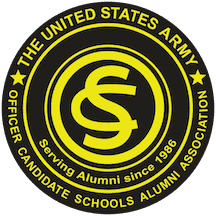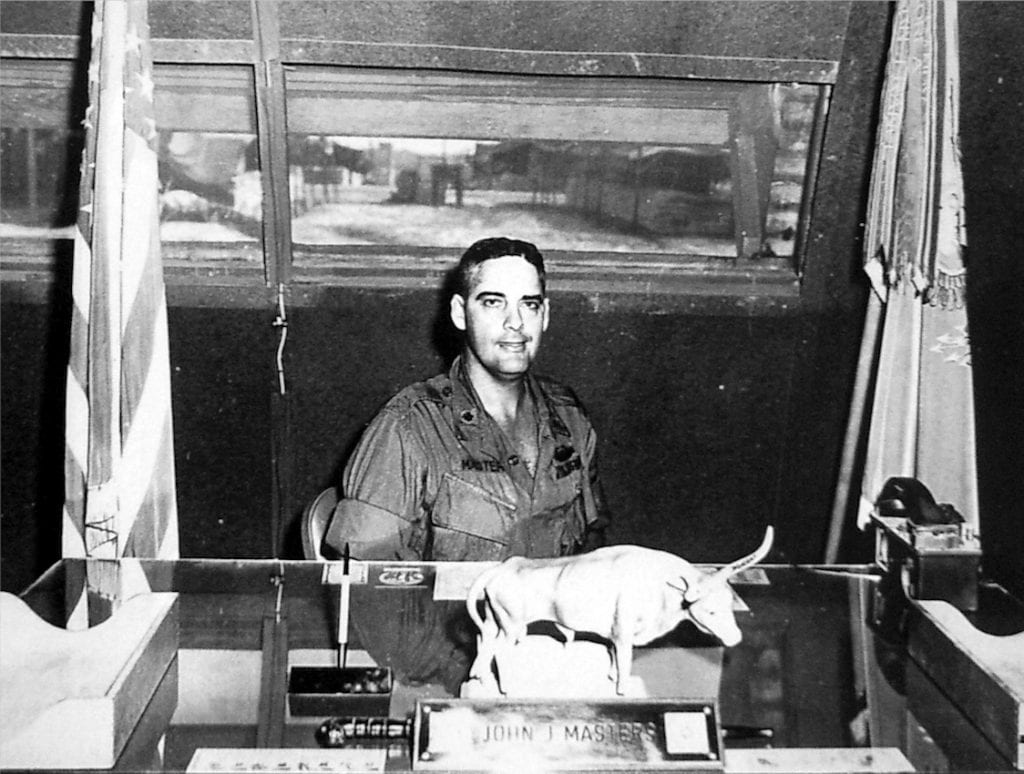John J. Masters, Sr.
Description
Colonel John J. Masters was commissioned an Infantry Officer upon graduation from Officer Candidate School, 21 November 1944, class number 361. His first duty assignment was as Platoon Leader, Company I, 315th Infantry, European Theater of Operations. | After further action at Bischweiller, France, then Second Lieutenant Masters participated with his division in the initial amphibious assault waves across the Rhine River at Dinslaken, Germany, on 24 March 1945, where he was awarded the Silver Star Medal for heroism in action. He participated in the encirclement of the Ruhr Valley and the reduction of the Ruhr Pocket. On 6 April 1945, he was wounded in the assault over the Rhine Herne Canal at Bottrop, Germany earning the Purple Heart. | On 1 May 1945, he received a battlefield promotion to First Lieutenant. For a short time after the close of the war in Europe, he commanded a Russian and Polish Displaced Persons Camp while participating in the occupation of the Ruhr Valley. In June 1945, he moved with his company to the towns of Lauterbach and Schonfeld in the Sudetenland, Czechoslovakia, where the 79th Inf. Div. remained in a state of readiness opposite the Russian Army for several months. | At the end of the war with Japan, he commanded a Lithuanian Displaced Persons Camp at Seligenstadt, Germany, until 21 Nov. 1945, when he was transferred to Company L, 26th Inf. Regt., 1st Inf. Div. at Nuremberg, Germany, where the company was guarding the Palace of Justice for the war crime trials for the major Nazi war criminals. He assumed command of the company on 6 February 1946. In October of 1946, he returned to the U.S. and released from active duty at Fort Bragg, North Carolina as a Captain in the Reserves on 29 December 1946. While serving in the European Command, he participated in the Central European, Ardennes-Alsace, and Rhineland Campaigns. | In August of 1947, he graduated from the Associated Infantry Advanced Course at Fort Benning, Georgia while in a Reserve status. On 20 October 1947, he returned to active duty service by enlisting in the Army as a Staff Sergeant and after a refresher training course at Fort Jackson, South Carolina, he returned to the 26th Inf., 1st Inf. Div. at Bamberg, Germany, where he served as a Rifle Squad Leader and Regimental Operations Sergeant. He was discharged as a Technical Sergeant on 24 July 1948, in order to re-enter active duty for competitive tour for appointment as a Regular Army Officer. He was appointed in the Regular Army on 3 October 1949 and remained in the 26th Inf. Regt. where he served as a Rifle and Intelligence and Reconnaissance Platoon Leader. In December 1949, he completed the Combat Intelligence Course at the EUCOM Intelligence School at Oberammergau, Germany. | In October of 1950, he assisted in the reactivation of the 2nd Bn, 6th Inf. Regt. at Grafenwoehr, Germany, where he was assigned as XO of Co. E, 2nd Bn. He accompanied the battalion to Berlin, Germany in Nov. 1950, where the remainder of the regiment had been activated. In Dec. 1950, he was assigned as Asst. S-3, 2nd Bn., 6th Inf. Regt. He assumed command of Hqs Co. 2nd Bn, 6th Inf. in Berlin in March 1951, and remained in that assignment until he was reassigned to the U.S. in October 1951 to attend the Regular Infantry Officer Advance Course at Fort Benning, Georgia, graduating in May 1952. From then till July 1954, he served as the Assistant Professor of Military Science and Tactics, ROTC, for five of the public high schools, in Atlanta, Georgia. | In Aug. 1954, he was assigned to Korea with duty at the 17th Inf., 7th Inf. Div. at Camp Kaiser. He served as Commanding Officer of Co. H until April 1955, when he was appointed S-4 of the regiment. In Oct. 1955, he was appointed Assistant Regimental XO in charge of the newly authorized semi-permanent base development at Camp Kaiser. | Upon completion of his tour in Korea in Feb. 1956, he was detailed to duty with the Army Security Agency (ASA) at Fort Devens, Massachusetts, where he served as Commanding Officer of Co. F, 2nd Student Bn. and of Hqs Company, USASA School, from April 1956 to Dec.1957. When these two units and the Hqs Company of the USASA Student Regt. were merged into the newly activated Hqs Co., USASA Training Regt. on 19 December 1957, he organized the 1300 officer and enlisted member company and became its first commander. He completed his detail with the ASA in Dec. 1958, and assigned to Hqs, 2nd Inf. Bde., also at Fort Devens, where he served as Asst. S-3 in charge of ROTC and civil activities. In May 1959, he was appointed Brigade S-3. | Colonel Masters was accepted for specialization in the Army Security Agency in April 1959 and assigned to the 318th USASA Bn. at Herzo Base, Germany. He served as Bn. S-4 and later as Commanding Officer of the 183rd USASA Company until October of 1961. He was then assigned to the 319th USASA Bn. at Rothwesten Base, Germany, as Bn. XO until July 1963, when he returned to the U.S. In June 1964 he graduated from Command and General Staff College at Ft. Leavenworth, Kansas. | In July 1964, he assumed command of the 303d ASA Bn. at Fort Wolters, Texas. In May 1966 he took the battalion to South Vietnam in support of the II Field Force Vietnam involved in the counterinsurgency operation there and participated in the Vietnam Counteroffensive and Vietnam Counteroffensive, Phase II campaigns. He relinquished command of the 303d ASA Bn. in April 1967 and assigned to the 507th USASA Group as XO at Baumholder, Germany. He assumed command of the 507th Group in July 1968 and, in July 1970, reassigned to the National Security Agency as Deputy Chief ADPSD on the personal staff of the Assistant Director for Production, NSA. | In August 1973 he assumed duties of Commander, ASA Europe; Chief Current Support Group; Deputy Commander ASA (Europe) and personal representative of the Commanding General ASA to HQ USAREUR/7th Army with Headquarters at Heidelberg, Germany. On 1 September 1975 he was retired at Fort McPherson, Georgia. During his 32 year military career, COL Masters was twice awarded the Legion of Merit. | His awards and decorations include: Combat Infantryman Badge, World War II Victory Medal, Purple Heart, Army Commendation Medal, Bronze Star, Legion of Merit w/ Oak Leaf Cluster and Silver Star.

